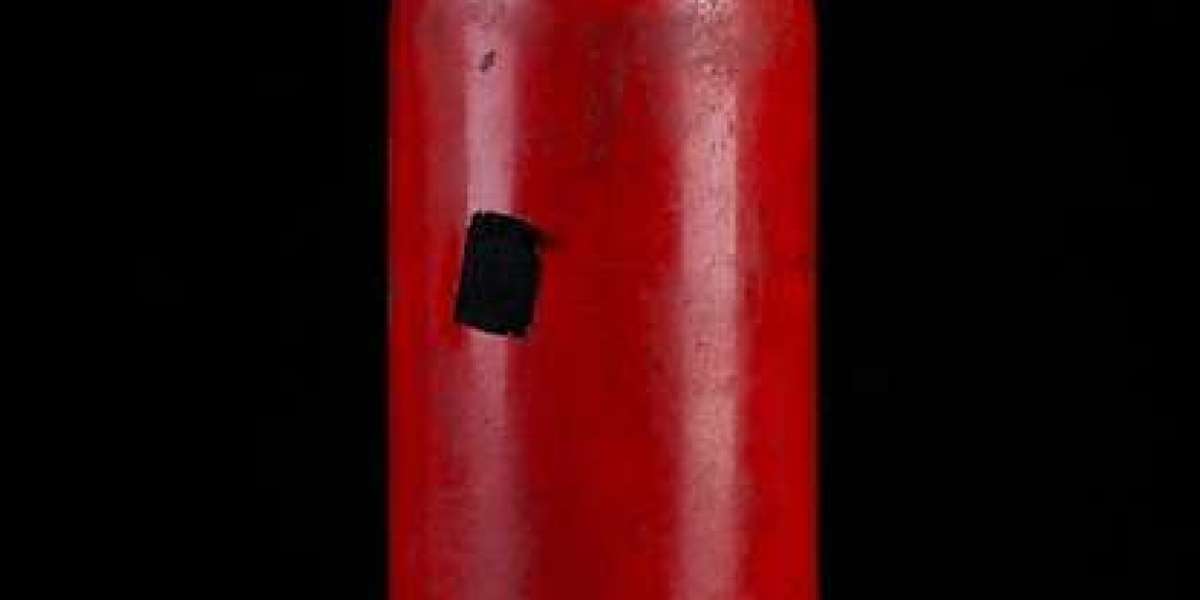Fire safety is an important consideration in every environment, whether it's at home, in an office, or on an industrial site. One of the most basic but crucial tools in fire prevention is the fire extinguisher. These devices are designed to help put out small fires before they escalate into dangerous situations. In this blog, we’ll explore the importance of fire extinguishers, the different types available, how to use them properly, and the need for regular maintenance to ensure they are ready when needed.
Why Fire Extinguishers Are Essential
Fires can occur without warning, and the ability to respond quickly can be the difference between a minor incident and a full-scale disaster. Fire extinguishers are an essential part of any fire safety plan, as they provide a means to quickly suppress flames before they spread. They are designed to be easy to use, even by people with little to no experience in handling fire-related emergencies.
Having the right fire extinguisher readily available can prevent fires from growing larger and help save lives, reduce property damage, and minimize injuries. Whether it’s a kitchen grease fire, an electrical fire in the office, or a small industrial blaze, having the proper fire extinguisher can make all the difference.
Different Types of Fire Extinguishers
Not all fires are the same, and that’s why different types of fire extinguishers are available. Fire extinguishers are classified according to the type of fire they can put out, which is critical to understanding which one to use in an emergency. The five main types of fire extinguishers are:
1. Water Fire Extinguishers (Class A)
Water fire extinguishers are typically used for class A fires, which involve ordinary combustibles like wood, paper, cloth, and plastics. These extinguishers work by cooling the flames and preventing the fire from spreading. They are not suitable for flammable liquids or electrical fires.
- Use: Combustible materials such as wood, paper, or textiles.
- Do not use: Electrical fires or flammable liquids.
2. Foam Fire Extinguishers (Class A & B)
Foam fire extinguishers are versatile and can be used on both class A and class B fires. They are especially useful for fires involving flammable liquids such as oil, petrol, or paints. Foam works by forming a blanket over the fire, cutting off the oxygen supply and preventing re-ignition.
- Use: Wood, paper, textiles, oils, solvents, and petrol-based fires.
- Do not use: Electrical fires or cooking oils.
3. Dry Powder Fire Extinguishers (Class A, B, C, and Electrical)
Dry powder fire extinguishers are one of the most versatile types, as they are effective on class A, B, and C fires, as well as electrical fires. These extinguishers work by interrupting the chemical reaction of the fire, helping to stop the flames quickly.
- Use: Combustibles, flammable liquids, gases, and electrical fires.
- Do not use: Cooking oils or food-related fires.
4. Carbon Dioxide (CO2) Fire Extinguishers (Class B & Electrical)
CO2 fire extinguishers are particularly effective for fires involving electrical equipment and flammable liquids. The CO2 displaces oxygen around the fire, suffocating it. These extinguishers leave no residue, making them ideal for use around electronic equipment, like computers and servers.
- Use: Flammable liquids and electrical fires.
- Do not use: Class A fires (wood, paper).
5. Wet Chemical Fire Extinguishers (Class F)
Wet chemical fire extinguishers are specifically designed for kitchen and restaurant use, particularly to fight class F fires involving cooking oils or fats. These extinguishers release a fine mist that cools the oil and forms a barrier to prevent re-ignition.
- Use: Cooking oils and fats (class F fires).
- Do not use: Electrical fires or flammable liquids.
How to Use a Fire Extinguisher: The PASS Method
Knowing how to properly use a fire extinguisher can be the difference between quickly controlling a fire or facing disaster. The PASS method is a simple acronym that can help you remember the steps to safely operate a fire extinguisher:
- P: Pull the pin – This prevents the handle from being accidentally activated.
- A: Aim the nozzle – Point the nozzle at the base of the fire, not the flames. This ensures you are attacking the source of the fire.
- S: Squeeze the handle – Apply pressure to discharge the extinguishing agent.
- S: Sweep from side to side – Move the nozzle back and forth across the base of the fire until it is completely extinguished.
Fire Extinguisher Maintenance and Inspection
Having a fire extinguisher is only part of the equation—proper maintenance is essential to ensuring the device works effectively in an emergency. Regular inspection and maintenance of fire extinguishers are necessary to ensure they are in good condition when needed. Here are some tips for keeping your fire extinguishers ready for use:
1. Regular Inspections
Check your fire extinguishers regularly, ideally every month, to ensure they are fully charged, unobstructed, and free from visible damage. Look for the following:
- The pressure gauge should be in the green zone.
- The pin should be intact, and the seal should not be broken.
- There should be no signs of corrosion or leaks.
- The nozzle should be unobstructed and in good condition.
2. Professional Servicing
Fire extinguishers should be professionally serviced and recharged according to the manufacturer’s recommendations. Typically, this service should be performed annually or if the extinguisher has been used.
3. Replace Expired or Damaged Extinguishers
Fire extinguishers have a limited lifespan, often around 5 to 15 years. Always check the expiry date, and replace extinguishers that are no longer effective. If the extinguisher has been used, it will need to be refilled or replaced.
Why You Should Have a Fire Extinguisher
Whether you are at home, in an office, or managing a large industrial facility, a fire extinguisher should be part of your essential safety equipment. Here’s why:
- Quick Response: A fire extinguisher allows you to respond immediately to small fires, preventing them from escalating.
- Saves Lives: Having an extinguisher on hand helps protect lives by enabling fast action in case of fire.
- Minimizes Damage: By containing the fire early, fire extinguishers can reduce damage to property, equipment, and inventory.
- Compliance: Many workplaces and buildings are legally required to have fire extinguishers in place.
Conclusion
A fire extinguisher is a simple yet vital tool that can make all the difference in an emergency situation. By understanding the different types of fire extinguishers, knowing how to use them, and ensuring they are properly maintained, you can help prevent fires from causing significant harm. Regular inspections and proper training are key to ensuring that these devices function properly when needed. Ultimately, having the right fire extinguisher is an essential part of any fire safety plan, ensuring the safety of your home, workplace, and everyone in it.








